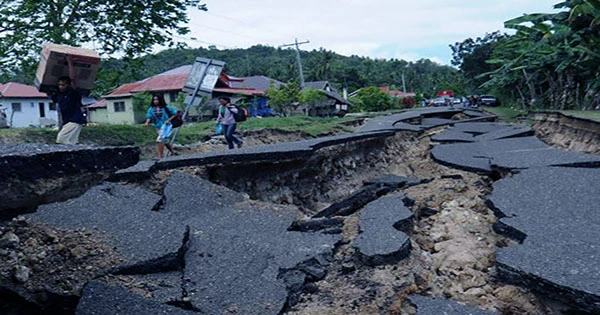A magnitude 6.9 earthquake has rocked Puno, Peru’s southernmost district, approximately 100 kilometers (60 miles) from Bolivia’s border. According to the Instituto Geofsico del per, the violent quake originated 240 kilometers (149 miles) underground. It was felt well beyond Peru’s particular region, into Bolivia and Chile, due to its amazing depth. The United States Geological Survey (USGS) measured a somewhat stronger and shallower quake at magnitude 7.2. Despite its magnitude, this event does not appear to have resulted in significant damage or casualties at this time. There has been no tsunami warning issued. People have experienced varied intensities on the ground, notwithstanding the size.
“The various perceptions of the duration of ground shaking are based on the reaction of the soils: compact soils attenuate waves; heterogeneous soils amplify waves, allowing ground shaking to be seen with higher intensity and duration.” People sense ground shaking as a result of seismic waves created by the earthquake, according to Hernando Tavera, director of the IGP, in a statement. The quake happened at 7:02 a.m. local time and originated deep beneath the Nazca Plate, which is sinking into the South American plate. This has resulted in the Andes and incredibly violent earthquakes over millions of years.
The M 7.2 Peru earthquake that struck near Lake Titicaca on May 26, 2022, was caused by oblique faulting in the lithosphere of the subducted Nazca plate at an intermediate depth of roughly 220 kilometers under southeastern Peru. The rupture occurred on either a steeply dipping fault striking west or a moderately dipping fault striking south, according on focal mechanism solutions. The oceanic Nazca plate is moving east-northeast at a pace of around 71 mm/yr relative to the South America plate near the epicenter of the earthquake, subducting in the Peru-Chile Trench west of the Peruvian coast and sinking into the mantle under South America.
Earthquakes having focal depths of 70 to 300 kilometers, such as this one, are known as “intermediate-depth” earthquakes. Although intermediate-depth earthquakes do less damage on the ground surface above their foci than shallow-focus earthquakes of equivalent size, massive intermediate-depth earthquakes can be sensed a long way from their epicenters. Deep-focus earthquakes, defined as those with focal depths larger than 300 kilometers, can also be found on the subducted Nazca plate east of the Peru-Chile Trench, beneath western Brazil and central Argentina. In this area, earthquakes have been detected to depths of roughly 650 kilometers.
The Peru-Chile Trench is prone to big earthquakes on a regular basis. There have been 11 additional intermediate depth earthquakes with magnitudes of 6.5 within 500 kilometers of the May 26th earthquake in the last century. The quake that struck today was the most powerful of them all. On March 3, 2019, an M7.0 earthquake struck in a nearly same region.
















